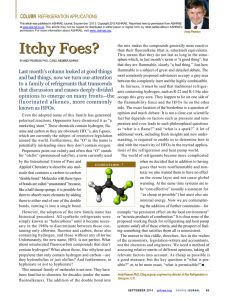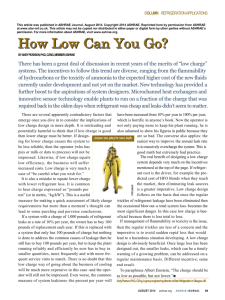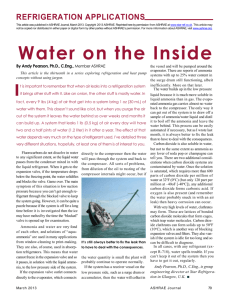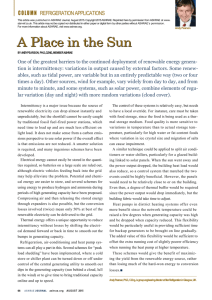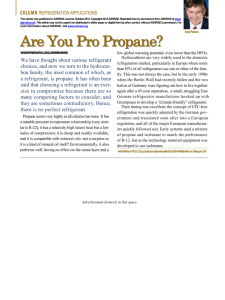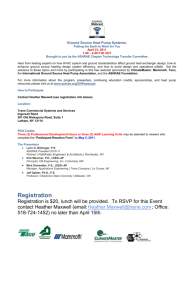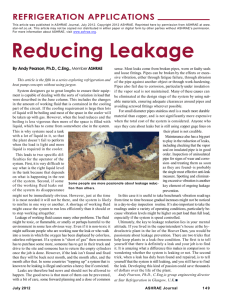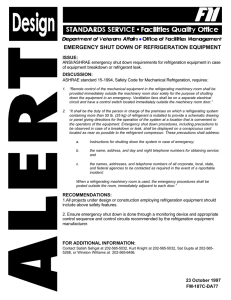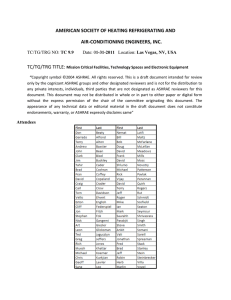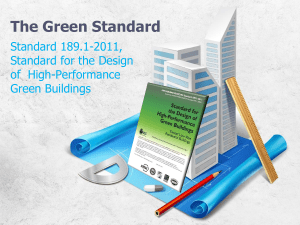88 ASHRAE JOURNAL ashrae.org NOVEMBER 2015 Andy
advertisement
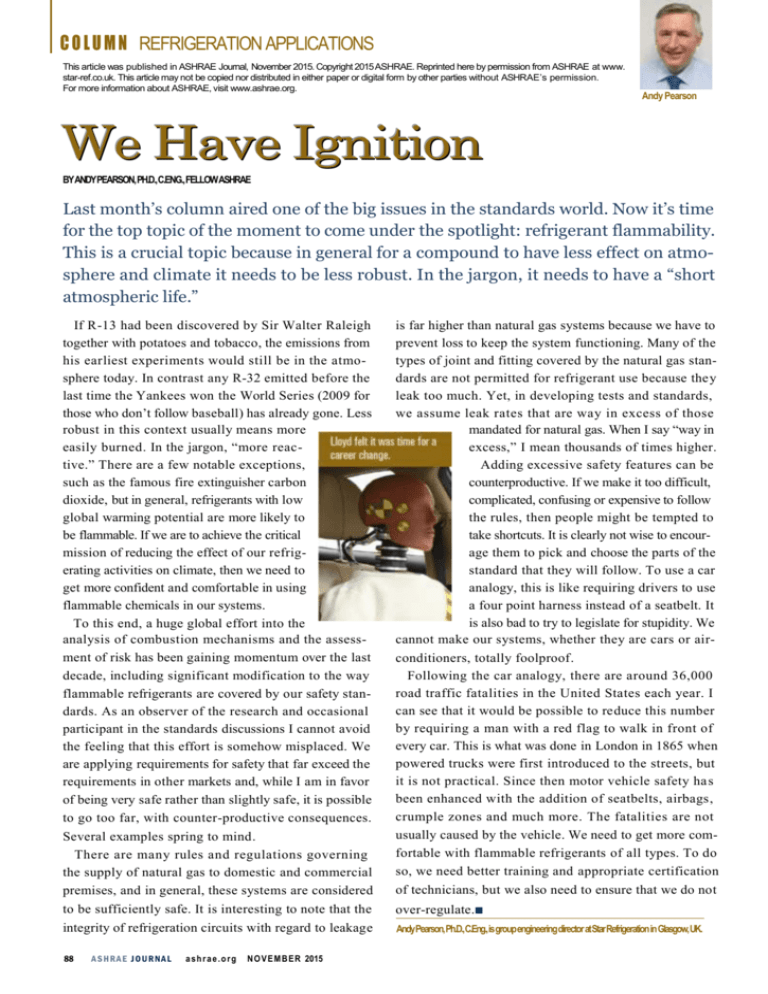
C O L U M N REFRIGERATION APPLICATIONS This article was published in ASHRAE Journal, November 2015. Copyright 2015 ASHRAE. Reprinted here by permission from ASHRAE at www. star-ref.co.uk. This article may not be copied nor distributed in either paper or digital form by other parties without ASHRAE’s permission. For more information about ASHRAE, visit www.ashrae.org. Andy Pearson We Have Ignition BY ANDYPEARSON, PH.D.,C.ENG.,FELLOWASHRAE Last month’s column aired one of the big issues in the standards world. Now it’s time for the top topic of the moment to come under the spotlight: refrigerant flammability. This is a crucial topic because in general for a compound to have less effect on atmosphere and climate it needs to be less robust. In the jargon, it needs to have a “short atmospheric life.” If R-13 had been discovered by Sir Walter Raleigh together with potatoes and tobacco, the emissions from his earliest experiments would still be in the atmosphere today. In contrast any R-32 emitted before the last time the Yankees won the World Series (2009 for those who don’t follow baseball) has already gone. Less robust in this context usually means more easily burned. In the jargon, “more reactive.” There are a few notable exceptions, such as the famous fire extinguisher carbon dioxide, but in general, refrigerants with low global warming potential are more likely to be flammable. If we are to achieve the critical mission of reducing the effect of our refrigerating activities on climate, then we need to get more confident and comfortable in using flammable chemicals in our systems. To this end, a huge global effort into the analysis of combustion mechanisms and the assessment of risk has been gaining momentum over the last decade, including significant modification to the way flammable refrigerants are covered by our safety standards. As an observer of the research and occasional participant in the standards discussions I cannot avoid the feeling that this effort is somehow misplaced. We are applying requirements for safety that far exceed the requirements in other markets and, while I am in favor of being very safe rather than slightly safe, it is possible to go too far, with counter-productive consequences. Several examples spring to mind. There are many rules and regulations governing the supply of natural gas to domestic and commercial premises, and in general, these systems are considered to be sufficiently safe. It is interesting to note that the is far higher than natural gas systems because we have to prevent loss to keep the system functioning. Many of the types of joint and fitting covered by the natural gas standards are not permitted for refrigerant use because they leak too much. Yet, in developing tests and standards, we assume leak rates that are way in excess of those mandated for natural gas. When I say “way in excess,” I mean thousands of times higher. Adding excessive safety features can be counterproductive. If we make it too difficult, complicated, confusing or expensive to follow the rules, then people might be tempted to take shortcuts. It is clearly not wise to encourage them to pick and choose the parts of the standard that they will follow. To use a car analogy, this is like requiring drivers to use a four point harness instead of a seatbelt. It is also bad to try to legislate for stupidity. We cannot make our systems, whether they are cars or air- integrity of refrigeration circuits with regard to leakage AndyPearson,Ph.D.,C.Eng.,is group engineering director atStar Refrigeration in Glasgow,UK. 88 ASHRAE JOURNAL a s h r a e .o r g N O V E M B E R 2015 conditioners, totally foolproof. Following the car analogy, there are around 36,000 road traffic fatalities in the United States each year. I can see that it would be possible to reduce this number by requiring a man with a red flag to walk in front of every car. This is what was done in London in 1865 when powered trucks were first introduced to the streets, but it is not practical. Since then motor vehicle safety ha s been enhanced with the addition of seatbelts, airbags, crumple zones and much more. The fatalities are not usually caused by the vehicle. We need to get more comfortable with flammable refrigerants of all types. To do so, we need better training and appropriate certification of technicians, but we also need to ensure that we do not over-regulate.■
